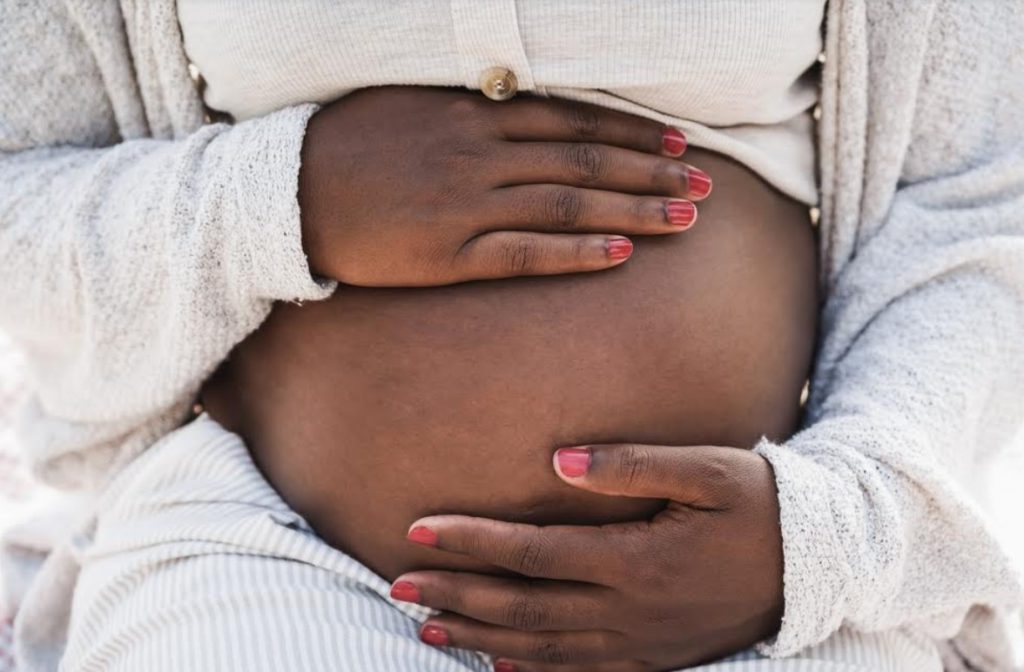Pregnancy is a great time that affords you the opportunity to prepare for the birth of a new child. Most of the time, you are happy and looking forward to finally holding your bundle of joy in your hands. Despite these feelings, some discomforts are also associated with pregnancy. One of which is pregnancy inner thigh pain.

Yes, you are happy for the new child that is on the way, but you are also sad about the discomfort that comes along with it. One of the many uncomfortable symptoms you may have during pregnancy is inner thigh pain. You can also find out about various weird pregnancy symptoms here.
In this article, you will learn more about the things you need to know about inner thigh pain – what it is, the causes, symptoms, risk factors, treatment, and when to see a doctor.
What does it mean if you have inner thigh pain during pregnancy?
This is pain felt in the groin or inner thigh during pregnancy, especially in the last few months of pregnancy. This may be a result of pubic symphysis dysfunction. This can cause stiffness in pelvic joints or cause uneven movements when you walk.
What causes inner thigh pain during pregnancy?
A couple of things can cause inner thigh pain during pregnancy. They include:
- Symphysis pubis dysfunction
The symphysis pubis (or pubic symphysis) is a joint between the right and left pubic bones. The ligaments and muscles supporting this joint stretch and relax during pregnancy in order to accommodate the uterus and the baby.
This continuous stretching and relaxing causes the pubic symphysis to be unstable, leading to symphysis pubis dysfunction.

- Round ligament
Round ligaments are a fibrous band of connective tissue that attaches to the uterus and also provides support for t it. As the uterus grows during pregnancy, the round ligament stretches. This stretch leads to pain that may be worse during sudden movements like changing positions.
The pain is also said to be sharp, dull, and sudden and can radiate from the upper thigh or groin to the hips or the upper legs.
- Vaginal infections
The vagina is a normal flora for some yeasts and bacteria. There is usually a balance between these organisms, but when there is a breach, and an outgrowth of yeast happens in the vagina, vaginal yeast infection occurs. Most of the time, the outgrowth caused by a yeast called Candida albicans.
A number of factors can cause an overgrowth of yeast in the vaginal during pregnancy. The changes in hormone levels can disrupt the normal pH of the vagina, supporting the increase in the yeast level.
A vaginal yeast infection during pregnancy can cause pain which can be felt in the upper thigh region.
What are the symptoms of inner thigh pain during pregnancy?
Pregnancy upper thigh pain can cause a number of symptoms such as:
- Pain in the pubic area, vagina, rectum or perineum.
- Pain or difficulty in walking.
- Pain radiates from one pelvic area to another.
- Electric shock-like sensations in the vagina or upper thigh.
- Pain that gets worse with activities.
What are the risk factors for inner thigh pain during pregnancy?
Some risk factors for developing inner thigh pain during pregnancy include:
- being overweight or obese,
- smoking,
- strenuous exercise,
- exercising without stretching first.
What are the possible treatments for inner thigh pain during pregnancy?
This pain during pregnancy can be effectively managed with some home remedies but in severe cases, it with be managed with some medical or surgical procedures.
Home remedies
- Ice therapy: you can apply ice cubes over the surface of the thigh to relieve pain.
- Rest: you may be having thigh pain because you are stressed. Getting a great deal of rest can help relieve pain
- Lifestyle modifications: improving on some habits that help to reduce weight and ensure healthy living is encouraged.
- Regular exercise to lose weight and stay fit can help relieve pain.
- Massage: a gentle massage over the thigh can also help to relieve thigh pain during pregnancy.
Other treatments
- If symptoms persist after using the home remedies, you can use some over-the-counter (OTC) pain medication to relieve pain. Make sure you consult your doctor before using any drug during pregnancy.
- Prescription medication. Your doctor may prescribe some other pain relief for you like corticosteroids.
- Use of therapeutic devices like a brace or cane.
How to prevent inner thigh pain during pregnancy
You may not be able to prevent thigh pain during pregnancy, but you can minimize your risk of having them.

The following can help you prevent inner thigh pain during pregnancy:
- Maintain a healthy weight: being overweight is a risk factor for inner thigh pain during pregnancy. Maintaining a healthy weight will help reduce the risk and also helps you have a healthy pregnancy.
- Regular exercise: this helps you stay fit and prevent pain associated with lack of exercise. Some exercise like Kegels and pelvic tilts helps to strengthen the pelvic muscles and helps you stabilize your pelvis better. It also helps you reduce the pain you are feeling.
- Stretch before you start exercising: stretching before you start exercise helps to prevent against strain or tears that may occur if you don’t prepare yourself for exercise.
- Stop smoking: smoking has a deleterious effect on you and your baby if you keep smoking during pregnancy.
When to see a doctor
You should always inform your doctor of any pain that you feel during pregnancy. See your doctor if you have inner thigh pain that worsens or is severe. If you have pain in other parts of your body like your abdomen together with the inner thigh pain, you should see your doctor too.
If you have other symptoms associated with the inner thigh pain like painful contractions before your 37th week, fever, chest pain, or bleeding from the vagina, see your doctor.
Conclusion
Inner thigh pain during pregnancy is quite common. Although it may just be pregnancy causing the pain. Other times, it may be a signal of some other underlying medical condition. You should report any pain to your doctor.

